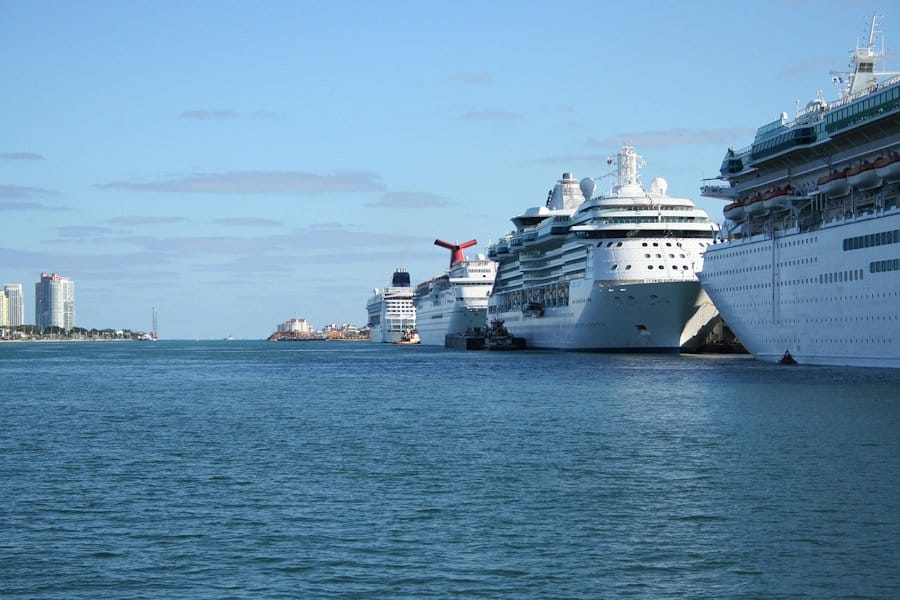Let’s be real: most of us aren’t swimming in cash. Between student loans, rent or mortgage payments, car loans, insurance, credit card debt, and everyday expenses, saving for a vacation like a cruise can feel like a pipe dream. After monthly bills, you’re often left wondering, “Where did my money go?” Yet, the allure of a cruise—sailing to exotic ports, dining under the stars, and unwinding on the open water—is hard to resist. The good news? You can afford a cruise without breaking the bank or drowning in debt.
Table of Contents
ToggleUltimate Guide to Affording a Cruise on a Budget: Smart Payment Plans and Creative Saving Strategies
Cruises are often more budget-friendly than land vacations. Once you pay the cruise fare, your accommodations, meals, and entertainment are typically covered. I recently met a cruiser who spent nothing beyond her fare, enjoying every moment without extra costs. With smart planning, creative financing, and disciplined saving, you can make your cruise dreams a reality. This expanded guide, now over 1,500 words, offers eight proven strategies to pay for your cruise, plus insider tips and new insights to stretch your budget further. Whether you’re a first-time cruiser or a seasoned sailor, these methods will help you sail stress-free.
For more cruise inspiration, check out:
Why Cruises Are a Budget-Friendly Vacation
Before diving into payment strategies, let’s address why cruises are a smart choice for budget-conscious travelers:
- All-Inclusive Value: Your fare covers lodging, meals, and entertainment, unlike land vacations where hotels, dining, and activities add up fast.
- Flexible Options: Cruises range from affordable 3-night getaways ($300-$500 per person) to luxurious 14-night voyages, catering to all budgets.
- No Hidden Costs: With careful planning, you can avoid onboard extras like specialty dining or excursions, as many cruisers do.
The key is to plan ahead, choose the right payment method, and leverage deals. Here’s how to make it happen.
1. Credit Cards: Strategic Use for Maximum Benefits
How It Works
Credit cards are the most common way to book a cruise, especially online. But with fares often ranging from $1,000 to $3,000+, paying the balance in full by the next statement isn’t always feasible. Smart credit card use can help you manage costs without racking up high interest.
Strategies to Save
- Choose Low- or No-Interest Cards: Look for cards with 0% introductory APR offers (12-18 months) for large purchases. For example, the Chase Freedom Unlimited or Citi Simplicity often have such promotions, letting you pay over time without interest.
- Leverage Sign-Up Bonuses: Cards like the Chase Sapphire Preferred or Capital One Venture offer 60,000+ points (worth $600-$750) after meeting spending requirements. Use these to offset cruise costs.
- Redeem Existing Points: Check your card’s travel portal to redeem points or miles for cruise bookings, reducing out-of-pocket expenses.
- Set a Payment Plan: If you can’t pay the full balance, commit to a monthly payment (e.g., $200-$300) to clear the debt within 6-12 months, minimizing interest.
Insider Tip
Use a card with travel perks, like the American Express Gold, which earns 4x points on travel purchases. Pair with a 0% APR card to pay over time while earning rewards for future trips.
Caution
Never book a cruise on credit without a repayment plan. Interest rates (15-25% APR) can turn a $2,000 cruise into a $3,000 burden over years. Calculate your monthly budget before charging.
2. Cruise Layaway: Interest-Free Installments
How It Works
Most cruise lines require full payment 75-90 days before sailing, giving you months to pay in installments if you book early. Booking 12-18 months in advance spreads the cost, making it manageable.
Example
A $2,000 cruise booked 12 months out, with a final payment due 90 days before sailing, gives you 9 months to pay. That’s just $222/month—less than many car payments or streaming subscriptions.
Strategies to Save
- Book Early: Secure your cruise 12-18 months out to maximize payment time. Early bookings often come with perks like onboard credit or free upgrades.
- Low Deposits: Many cruise lines (e.g., Carnival, Royal Caribbean) offer reduced deposits ($50-$100 per person) during promotions, lowering your upfront cost.
- Travel Agency Promotions: Agencies like CruiseDirect or Expedia Cruises occasionally offer no-money-down deals. Calculate monthly payments to hit the final payment deadline.
Insider Tip
Monitor cruise line websites or join forums like Cruise Critic for flash sales with low deposits or bonus perks, often announced 12-18 months before sailing.
3. Travel Agency Payment Plans: Buy Now, Pay Later
How It Works
Travel agencies increasingly offer “buy now, pay later” (BNPL) options through third-party financiers like Uplift. Agencies such as Expedia Cruises, CruiseDirect, and Vacations To Go partner with Uplift to provide flexible payment plans.
How Uplift Works
- Select Uplift at checkout on the agency’s website.
- Uplift performs a soft credit check to approve you for a loan (typically 0-36% APR, depending on credit).
- Choose a repayment term (e.g., 6, 12, or 18 months) with fixed monthly payments.
- Payments are auto-debited, and you can sail before paying in full.
Strategies to Save
- Compare Agencies: Shop around for agencies with low or no-interest Uplift plans. Some offer 0% APR for 6-12 months during promotions.
- Combine with Deals: Pair Uplift with agency perks like onboard credit or discounted fares.
- Pay Early: If you get a bonus or tax refund, pay off your Uplift loan early to avoid interest.
Insider Tip
Uplift’s soft credit check won’t hurt your score, so apply through multiple agencies to compare rates. Check Uplift’s website for current partners.
4. Cruise Line Financing and Payment Plans
How It Works
Many cruise lines offer built-in payment plans to simplify budgeting. These plans split your cruise fare into manageable installments, often interest-free if paid by the final payment date.
Cruise Line Options
- Carnival EasyPay: Pay a deposit, then split the balance into three equal payments, auto-debited monthly. Full payment is due 60-90 days before sailing. Book via Carnival’s website.
- Royal Caribbean FlexPay: Available through travel agents, FlexPay schedules up to 10 automatic payments before the final payment date. Contact a travel agent or visit Royal Caribbean’s website.
- Princess Cruises EZpay: Divide your fare into equal monthly payments, interest-free, with full payment due 75-90 days before sailing. Select at checkout on Princess’s website.
- Norwegian Cruise Line (NCL) with Uplift: Finance your cruise at checkout with Uplift (0-36% APR, based on credit). Available on NCL’s website.
- Virgin Voyages with Uplift: Similar to NCL, select Uplift for flexible payments. Book via Virgin Voyages’ website.
Strategies to Save
- Book During Promotions: Cruise lines often pair payment plans with perks like free drink packages or reduced deposits.
- Use a Travel Agent: For Royal Caribbean’s FlexPay, agents can customize payment schedules to fit your budget.
- Monitor Deadlines: Ensure payments align with the final payment date to avoid cancellation fees.
Insider Tip
Check cruise line emails or social media for limited-time offers that combine payment plans with extras like free Wi-Fi or specialty dining credits.
5. Personal Loans or Lines of Credit: A Disciplined Approach
How It Works
Personal loans or lines of credit from banks, credit unions, or online lenders (e.g., SoFi, LendingClub) provide funds to cover your cruise, repaid in fixed or flexible installments.
Personal Loan vs. Line of Credit
- Personal Loan: Fixed amount (e.g., $2,000), fixed interest rate (5-20%), and set repayment term (12-60 months). Ideal for disciplined budgets.
- Line of Credit: Flexible borrowing up to a limit, with variable interest and low minimum payments. Riskier if you lack budgeting discipline.
Strategies to Save
- Shop Around: Compare rates from banks, credit unions, and online lenders. Credit unions often have lower rates (5-10% vs. banks’ 10-15%).
- Improve Your Credit: A score above 700 can secure rates as low as 5%. Pay down debt or correct credit report errors before applying.
- Short Terms: Choose a 12-24 month term to minimize interest, even if monthly payments are higher.
- Pre-Qualify: Use soft inquiries on sites like Credible to check rates without impacting your credit score.
Insider Tip
If your bank offers a pre-approved personal loan, negotiate the rate or term for better conditions. Pair with a savings plan to pay off early.
Caution
Avoid minimum payments on lines of credit, as they prolong debt and increase interest. Always have a repayment plan before borrowing.
6. Your Own Savings Plan: The Debt-Free Option
How It Works
Saving cash for your cruise eliminates debt and stress. By setting aside a fixed amount monthly, you can fund your trip without interest or loans.
Example
For a $3,000 cruise in 12 months, save $250/month ($3,000 ÷ 12). By the final payment date (90 days before sailing), you’ll have the cash ready.
Strategies to Save
- Automate Savings: Set up a dedicated savings account with auto-transfers from your checking account. Apps like Chime or Digit can round up purchases to boost savings.
- Cut Small Expenses: Skip one coffee ($5) or takeout meal ($20) weekly to save $100-$200 monthly.
- Side Hustles: Earn extra cash via freelancing (e.g., Upwork), ridesharing, or selling unused items on eBay. Dedicate these funds to your cruise.
- Use Windfalls: Apply tax refunds, bonuses, or gift money to your cruise fund.
Insider Tip
Create a visual savings tracker (e.g., a chart on your fridge) to stay motivated. Apps like YNAB (You Need a Budget) and the Cashflow Planning tool found at spnd.io can help track progress and adjust spending.
7. Group Bookings: Share Costs and Unlock Perks
How It Works
Booking as a group (8+ people) often secures discounts, onboard credits, or free berths (e.g., one free cabin for every 16 guests). Split costs with family or friends to lower your share.
Strategies to Save
- Cruise Line Incentives: Lines like Carnival, Royal Caribbean, and NCL offer group perks, such as $50-$200 onboard credit per cabin or discounted fares.
- Split Payments: Divide the deposit and fare among group members, reducing your monthly commitment.
- Theme Cruises: Join group sailings (e.g., music or hobby-themed cruises) for built-in discounts and shared activities.
Insider Tip
Work with a travel agent specializing in groups (e.g., Cruise Planners) to negotiate better rates and perks. Check Cruise Critic’s group boards for open group sailings to join.
8. Repositioning Cruises: Affordable Hidden Gems
How It Works
Repositioning cruises, when ships move between regions (e.g., Caribbean to Alaska), are significantly cheaper due to one-way itineraries and fewer port stops. Fares can be as low as $50-$100 per night, compared to $150-$300 for standard cruises.
Strategies to Save
- Book Early or Last-Minute: Repositioning cruises sell out fast or offer deep discounts close to sailing. Check Vacationstogo.com for deals.
- Flexible Dates: These cruises occur in spring (April-May) and fall (September-October), offering budget-friendly shoulder-season pricing.
- One-Way Flights: Use points or low-cost carriers (e.g., Spirit, WestJet) to book affordable flights to/from the start/end ports.
Insider Tip
Search for transatlantic or transpacific repositioning cruises on lines like Princess or Holland America for 14-21 night itineraries at bargain rates. Pair with a layaway plan for easy payments.
New Insights for 2025
- Inflation-Proof Your Budget: With cruise fares rising 5-10% annually, lock in 2025 or 2026 sailings now to secure current prices. Many lines offer price protection if fares drop later.
- Micro-Saving Apps: Use apps like Acorns or Qapital to save small amounts daily (e.g., $1-$5) based on your spending habits. Over a year, this can fund a short cruise.
- Loyalty Programs: Join cruise line loyalty programs (e.g., Royal Caribbean’s Crown & Anchor Society) before booking. Even first-timers get discounts or onboard credits.
- Off-Peak Savings: Book cruises in shoulder seasons (e.g., September for the Caribbean, April for Alaska) for 20-40% lower fares, stretching your budget further.
Final Thoughts
A cruise doesn’t have to be a financial burden. By leveraging credit card rewards, cruise line payment plans, travel agency financing, personal loans, savings, group bookings, or repositioning cruises, you can sail without stress or debt. The key is planning—book early, set a budget, and explore creative financing options. In a world of impulsive spending, channel the wisdom of past generations: save smart, pay strategically, and enjoy a vacation that fits your means.
Start today by setting a savings goal or contacting a travel agent to explore payment plans. Your dream cruise is closer than you think. For more tips, visit Cruise Port Advisor or join Cruise Critic’s budgeting forums.
Happy cruising!
This page contains affiliate links for which we may receive financial compensation when a purchase has been made through one of our affiliate partners.








